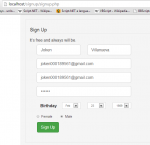Uploading files using PHP
In this tutorial, I’m going to show you how upload files from a client web broswser to a web server. To do this we need to configure first our PHP for file uploads.
- Read more about Uploading files using PHP
- Log in or register to post comments
- 290 views






